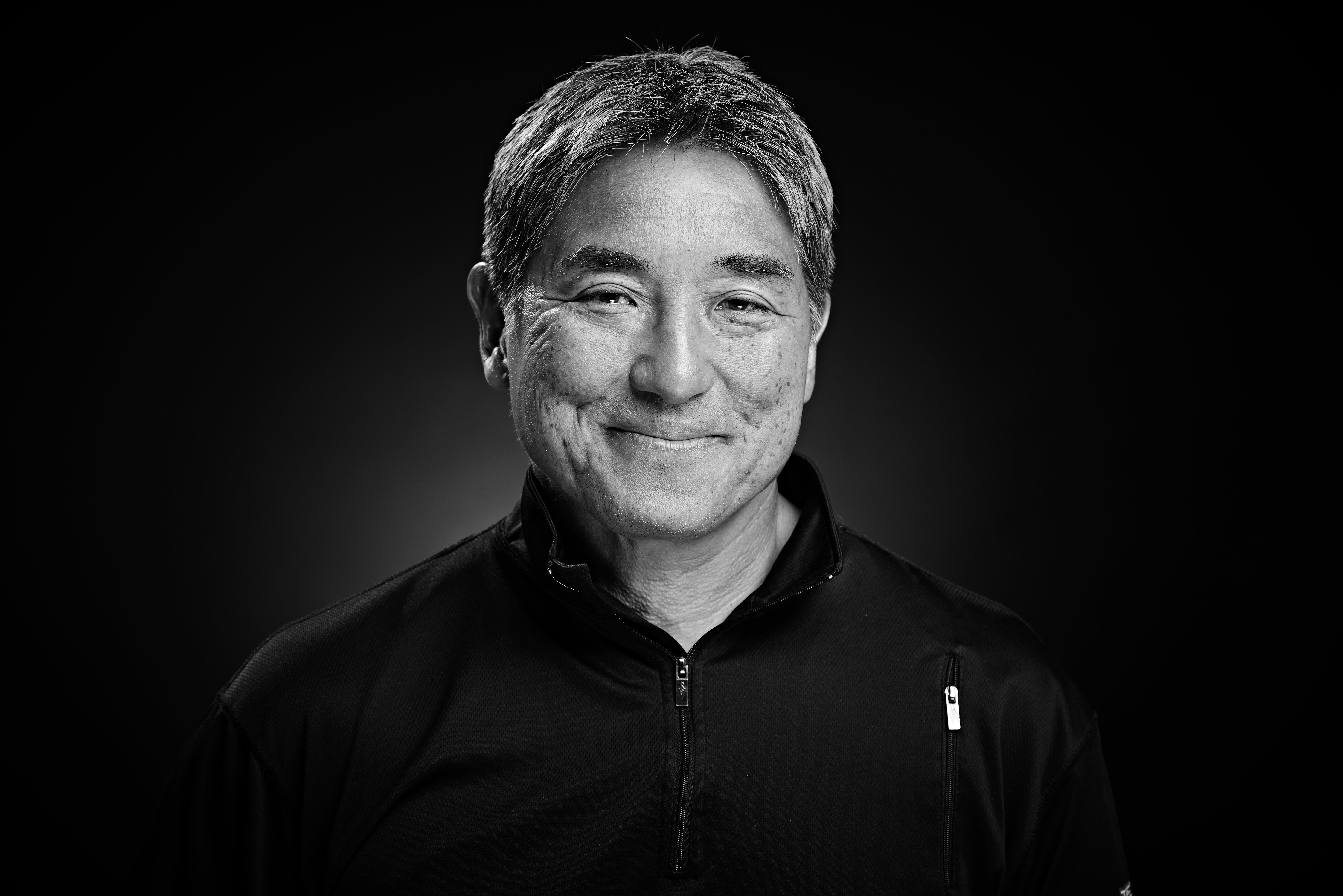‘It makes everyone into a better designer’: Guy Kawasaki on the enormous potential of Canva
After learning under Steve Jobs at Apple, Guy Kawasaki has become the ‘chief evangelist’ at Canva, the online design company making creation a whole lot easier, writes Andy Martin


Guy Kawasaki may be the only native of Hawaii who didn’t put a foot on a surfboard until he was 60. To be fair, though, he’s always done a lot of surfing of the virtual kind, which is how he came to work under Steve Jobs at Apple and, most recently, has become “chief evangelist” at Canva, the online design company. “Had I discovered surfing earlier, you would probably not be interviewing me,” he says.
Born in Honolulu, he’s now based in Santa Cruz, California, with a house a block from the beach, and tends to see people through blue-tinted glasses. “There are two types of surfers: some have to wait for the perfect day and the perfect wave when everything’s right and there’s blue sky and the wind is in the right direction – and then there’s the other kind – they go out no matter what and make the most of it.” And which is he? “I just go,” he says.
Kawasaki is a third generation Japanese-American whose grandparents originally went to Hawaii to pick sugarcane. “When I was growing up in Hawaii, faxes were still a big deal,” he says. “It was almost pre-electricity.” The constellation of islands that make up Hawaii, poking up out of the Pacific like giant periscopes, have long been an oceanic crossroads between Asia and America. But the big communications breakthrough for Hawaii was laying down the “information superhighway” in the 1990s. “When I was young,” says Kawasaki, “airlines that no longer exist were the only highway to the mainland.”
Hawaii, it should be said, whether or not you’re a surfer, is a beautiful place and most of the young Kawasaki’s contemporaries chose to stay put. “There were people who wanted to stay in Hawaii, to live and die in Hawaii. But when I looked at the world, I thought: Hewlett Packard, that’s a whole new game.” He won a place at Stanford University, on the west Coast, in the 1970s. “When I got off that airplane, I thought, this is it: it was love at first sight.”
He says that, back in the day, if you were Asian-American, your parents gave you a limited menu of options. You were expected to become a doctor or a lawyer or a dentist – and marry another Asian-American. Kawasaki “drew a blank on all four”. He tried medicine. “The first class was a tour of the hospital. I fainted at the sight of blood.” So instead he studied psychology. Utimately, he went on to law school, as required by his parents. “Most people quit after 20 years. I quit after two weeks. That’s when I knew I was special.”
He took an MBA at UCLA. It was only a four-day week, on the other days he was getting a foundation lesson in marketing, selling diamonds at a jewelry store. But it was while he was in LA that he fell in love with computers. An old Stanford classmate helped him get a job with Apple, in the Macintosh division, under Steve Jobs. He was 29. “There was no plan whatsoever,” he says. “I was just young and dumb and happy.”
He defined his mission as “software evangelist”. He had to go around persuading developers to write software for the Mac back in the days before it had any. You have to assume he did a pretty good job of it. “Everything you ever heard about Steve Jobs is true,” says Kawasaki. “You can’t work for Steve Jobs and not be influenced by him. He was a perfectionist. And he was demanding. But I don’t know anyone who worked for him who feels negative about it. I wouldn’t trade that experience for anything.”
You want to design your own book cover? You can do it in about 10 minutes with Canva
Kawasaki reckons that “the teachers who are the hardest on you and the bosses who are hardest turn out to be the best.” Up there with Steve Jobs in his pantheon is his old English teacher, Harold Keables. “He was a stickler for everything: the split infinitive was anathema to him. He taught you a love of detail.”
Post-Apple, Kawasaki – in his own self-deprecating account – “was floundering. I wrote a few books [such as The Macintosh Way and, most recently, Wise Guy], I had four kids and I set up a few companies.” When he was working on his own account, he employed someone to help him with graphics and they started using Canva. Then, six years ago, Canva noticed that Guy Kawasaki was using Canva and they asked him if he could be interested in working with them. “It was pure chance, like everything else in my life,” he says. Which is how he came to be their “chief evangelist”.
As a wordsman at heart, I regret having to say this: but we are living in a pre-eminently visual and aural culture. Canva chimes in with the zeitgeist by making seven million images every day. It’s a free platform with some 35 million users every month. They are, says Kawasaki, “democratising design” by making it accessible to non-specialists. He compares it to one of the great revolutions in tennis racket design. “Do you remember when Head brought out their power racket? It replaced the Wilson-style metal racket and the old wooden ones. It was huge with a giant sweet spot. Suddenly everyone was a better player. Canva is the Head racket of graphics. It makes everyone into a better designer.”
He says that “in the old world, BC – Before Canva”, you hired a designer, or if you worked in a big company you put yourself in the queue for the design office. Now you do it yourself. And what about pro designers? Are they all going to be put out of a job? Kawasaki thinks not. “They’re using Canva too. It’s better for them. It has raised people’s expectations, so designers are even more appreciated.”
He gives me an example of Canva in practice. “You want to design your own book cover? You can do it in about 10 minutes with Canva.” I download a design “type”, like “book cover” or “presentation” or “instagram post”. I scroll down the list of hundreds of possible templates. I choose the title. I download the picture. I edit it. Job done. “You can impress your kids,” he says. Easy. Now all I have to do is write the book.
It is sometimes said that Guy Kawasaki has the “golden touch”. “It’s easy to evangelise something that’s great,” he says. “The key to having the Midas touch is you find something that’s golden to begin with.”




Join our commenting forum
Join thought-provoking conversations, follow other Independent readers and see their replies
Comments